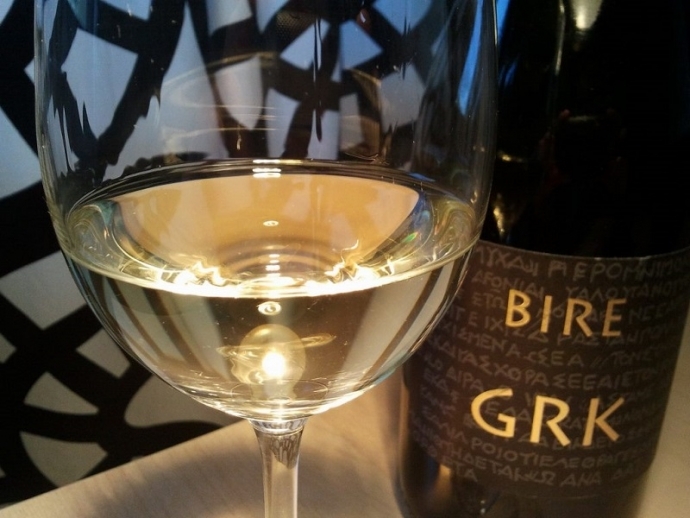Grk, sometimes called Grk Bijeli is an indigenous Croatian white wine, grown almost exclusively on the southern island of Korčula, specifically on the sandy and very dry soils around the village of Lumbarda at the easternmost tip of the island. The strip of land between two coastlines is very narrow there, so the grapes get a lot of sunlight and reflection off the sea, so the grapes tend to have very high sugars along with excellent acids.
Although the word “grk” literally means bitter, the wine is usually dry, high in acidity, somewhat aromatic and fruity with hints of pine and saltiness. Additionally, the word also stands for “the Greek”, which also hints at the origin. However, recent genetic studies have not shown any connection with the Greek varieties, rather it is confirmed to be indigenous to Croatia and a close relative to Tribidrag (which is, admittedly, better known under its other names, Zinfandel and Primitivo).
And that is not the only direct link between the white grape of grk and the indigenous red Plavac Mali: the other one is that Grk grape only has female flowers, so it’s unable to produce the fruit without the secondary variety growing alongside it in the vineyard. And that secondary variety is usually Plavac Mali in the Lumbarda vineyards, and has been for centuries, because both of those varieties blossom at the same time, resulting in ripe fruit at the beginning of September – and almost never gives a high yield. The resulting wine has clear golden color with percentage of alcohol almost always below 14 per cent.
The wine is best experienced locally, in Lumbarda where it’s grown and ripened, alongside local gastronomy: sea food, fish, any kind of risottos and white meat. It can also be served as an aperitif, but just remember that Grk needs to be served cold, at 12-13 °C. One other word of advice: if you make yourself a nice steak for dinner, avoid the temptation to pair it with your big red, a Pinot Noir or a Cabernet Sauvignon and give a bottle of Grk a try – at a somewhat higher temperature, somewhere around 16 °C, and make sure you let us know how that works for you!
Not a lot of Grk is produced and bottled yearly (after all, there are less than 40 acres of Grk vineyards on Korčula!), and your best chance of buying it is on Korčula, so if you happen to find yourself there, treat yourself to a nice tour of the wineries. The last name you’ll see the most is Cebalo, as three members of the family are producing Grk, Bartul, Branimir and Zoran. Other notable producers are Milina-Bire and Milina-Lovrić families, as well and Zure family. Also, a bit of extravagance can be found in a bottle of dessert wine, Slatki život (sweet life) made by the Rončević family on – Lastovo!
And if you really want to, try pronouncing it something like “gerkh”, but no one will mind if you mispronounce it: it has no vowels, after all!
Do you want to try Croatian wines?
If you want to savor the exquisite flavor of Croatian wines, look no further than wineandmore.com. Offering a wide range of wines from various winemakers, you can easily find what suits your palate.
Do you need help selecting the right wine bottle? Try one of their curated wine cases, and find the perfect vintage for any occasion!











